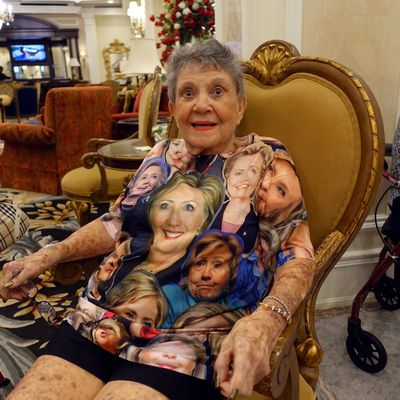
One of the major themes of the 2016 Democratic presidential nominating contest was Hillary Clinton’s astonishing weakness (and Bernie Sanders’s corresponding strength) among millennial voters. It was not unusual for Sanders to beat her by four- and five-to-one margins among under-30 or under-35 voters, and as the primaries went on, Clinton’s “millennial problem” extended into the African-American and Latino constituencies that were otherwise her stronghold.
Team Clinton went into the general election knowing the “millennial problem” — manifested less by defections to Trump than by third-party support and signs of depressed turnout — was a big deal. It tried by various methods ranging from issue selection to celebrity support to address the candidate’s lack of support from millennials. In the home stretch of the campaign, as minor-party support declined, it looked like Clinton had more or less succeeded in rebuilding the “Obama coalition,” including its millennial component — or at least enough to win.
Even in the wake of the November 8 upset, the vast attention paid to education levels among white voters as the key variable to look at in explaining the results deflected attention from millennials. Clinton did, after all, win under-30 voters by a 55-37 margin, short of Obama’s 60-37 margin in 2012 but not bad for a candidate who could hardly buy a millennial vote in the primaries.
Now comes the New York Times’ Nate Cohn with a second and much-deeper look at the returns, and it seems one of the most important culprits for Clinton in the key battleground states was her performance among younger white working-class and African-American voters.
One reason it was hard to see that factor right away is that the two groups of younger voters hurt Clinton in different ways: She lost a lot of younger white working-class voters that Obama had won in 2012, while younger African-American voters didn’t defect but also did not turn out at 2012 levels. And both of these phenomena were especially present in the Rust Belt states that awarded Trump the presidency. The dynamics among white voters helped explain the much-discussed development of Obama 2012 voters becoming Trump 2016 voters:
Most of Mr. Obama’s strength among white voters without a degree was due to his gains among those under age 45 …
Mr. Trump expanded on Republican gains among older working-class white voters, according to Upshot estimates, while erasing most of Mr. Obama’s gains among younger Northern white voters without a degree …
His gains among younger working-class whites were especially important in the Upper Midwest. Young white working-class voters represent a larger share of the vote there than anywhere else in the country.
While African-American turnout deficits in the Rust Belt got a lot of attention in the immediate postelection analysis, Cohn notes that age explains much of it:
Young black voters appear to be a key driver of the decline. They registered at a lower rate than they did ahead of the 2012 and 2008 presidential elections, causing the black share of registered voters to dip. And those who were registered turned out at a far lower rate than black registrants did four years ago.
As everyone should understand by now, it’s hard to isolate factors that determine very close elections, and talking about what did in Hillary Clinton is particularly hard since she won the national popular vote by more than 2 percent. But it is increasingly clear that her millennial problem did not end when Bernie Sanders finally conceded defeat and slowly began working to move his following in her direction.






























